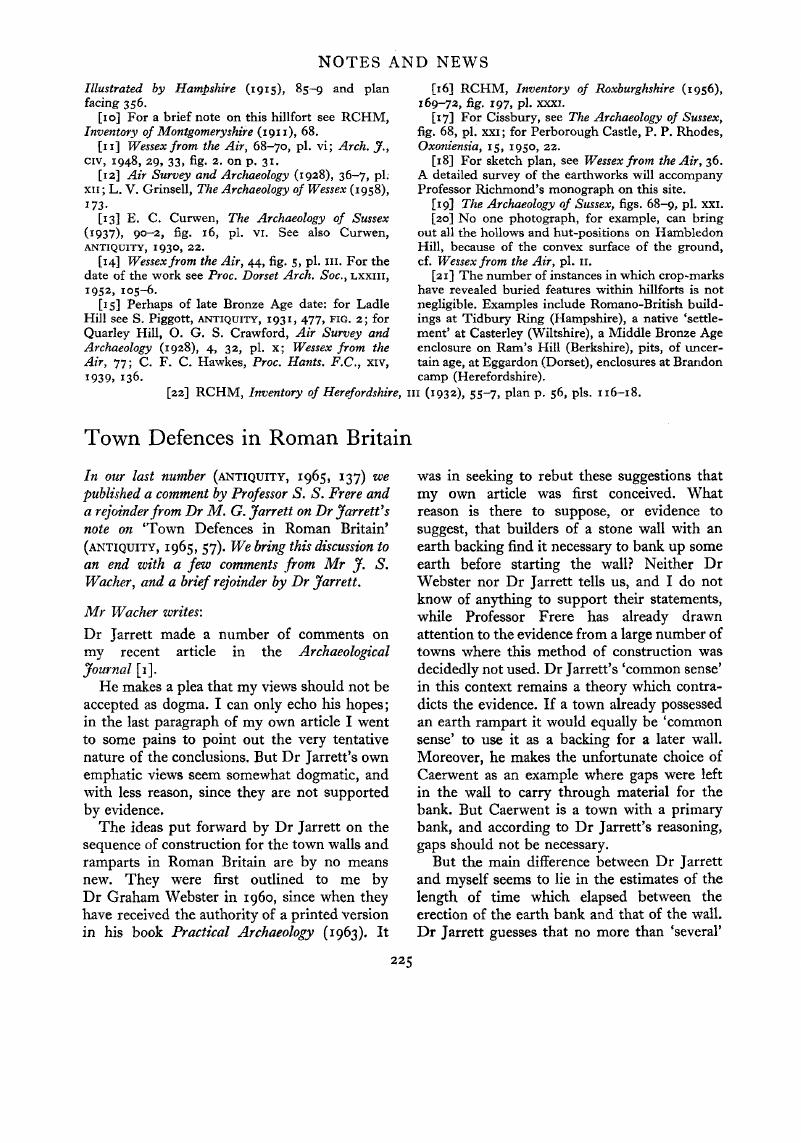No CrossRef data available.
Published online by Cambridge University Press: 02 January 2015

[1] Arch.J., CXIX, 1964, 103.Google Scholar The article has been revised to include new evidence and will be reprinted in (ed.) J. S. Wacher, Civitas Capitals of Roman Britain (Leicester University Press, forthcoming).
[2] J. S. Wacher, Excavations at Brough-on-Humber, 1958–61 (forthcoming). See Antiq. J., XL, 58–64, for the sequence of town defences. The figure of 120 years is based on a recent examination of all the finds from 18 sections. The t.p.q. for the rampart is a.d. 150, while that for the wall is a.d. 270.
[3] See Antiq. J., XLI–XLIV, for interim reports. The t.p.q. for the early rampart is provided by Hadrianic-Antonine pottery, and for the stone wall by a large group of pottery containing late Antonine and early 3rd-century pieces (notably Gillam Types 226, 314, Arch. Ael., 4, XXXV, 1–72). Eight sections have now been cut across the defences.
[4] B. R. Hartley, Dating Town Buildings and Structures, in (ed.) J. S. Wacher, Civitas Capitals of Roman Britain (forthcoming).
[5] S. S. Frere, , ‘Verulamium—Then and Now’, Bull. Inst. Arch., IV, 1964, 69 Google Scholar.
[6] Antiq. J. XLI, pl. XVIII (section AB).